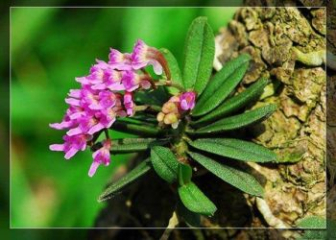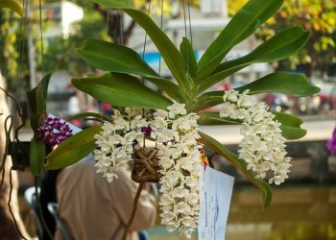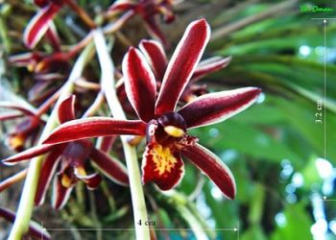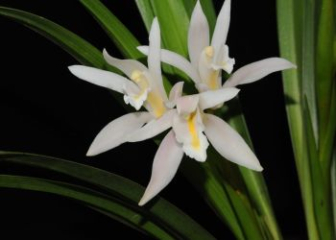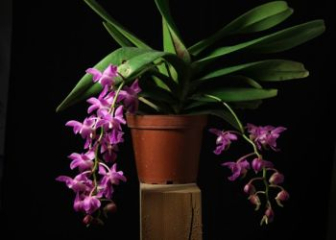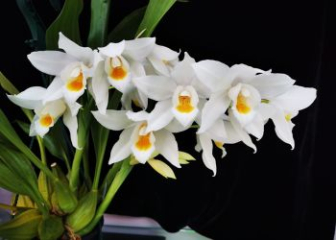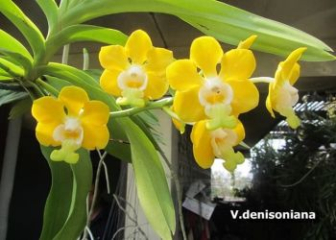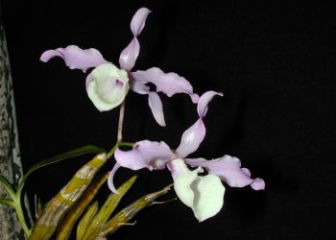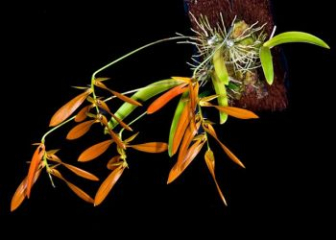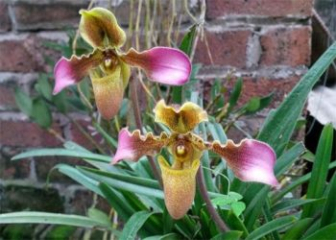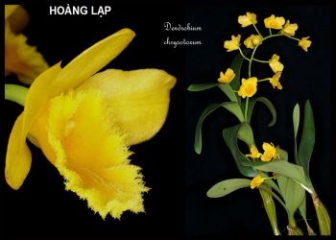Dendrobium secundum - How to grow and care from A to Z
Blog | by
Dendrobium secundum is a wild orchid with bright pink flowers that grow in clusters. It is easy to grow and care for, and blooms during Tet.
When it comes to the most colorful and impressive orchids, many orchid lovers will immediately think of Dendrobium secundum , right? This wild orchid not only has an attractive appearance with eye-catching purple-pink flower chains, but is also a symbol of luck and joy, a perfect gift or the right choice to decorate your garden.
In today's article, let's learn more about the origin, characteristics, meaning and how to grow Bao hi orchids to help you own beautiful orchid pots that bloom brilliantly every spring.
Origin of Dendrobium orchid

Clusters of Dendrobium orchids with brilliant dragon colors.
Dendrobium secundum, also known as Dendrobium orchid, scientific name is Dendrobium secundum, belongs to the genus Dendrobium, originated from Southeast Asia and South Asia, popular in the following countries:
- India, Nepal, Sri Lanka
- Myanmar, Thailand, Laos, Cambodia
- Vietnam: Lam Dong, Kon Tum, Gia Lai, Quang Nam, Nghe An
In nature, orchids often grow on tree trunks in humid forests or even on rocks, where there is high humidity, ventilation and light scattering.
The name "Bao hi" comes from the fact that this flower has bright pink and purple colors associated with joy, luck and good fortune, a sign of good news.
How to recognize Dendrobium orchid

Close-up of flowers, stems and leaves of the orchid Bao hi.
The Dendrobium is one of the most prominent and recognizable orchids in the genus Dendrobium because of its bright pink flower clusters. Let's learn more about the shape of the stem, leaves, roots and flowers of this orchid below.
Close :
- Cylindrical stem, grows upright or slightly curved, 30 - 90 cm long
- The stem has an ivory white, moldy white epidermis covering the outside, the young stem may have a green sheen under the white layer.
- Old stems often lose all their leaves, dry out at the tip and begin to flower.
Roots :
- Air roots, have good adhesion to the substrate
- The roots are ivory or grayish white.
Leaves :
- Grow alternately along the stem, mainly concentrated in the upper half of the young stem.
- Leaves are lanceolate, pointed at the tip, 6 - 12 cm long, 1 - 2.5 cm wide
- Leaves are light green or dark green, slightly shiny on top
- Leaves fall completely in late autumn - early spring, the time when the tree differentiates flower buds.
Flower :
- Flowers only grow at the oldest nodes near the top or middle of the stem, each stem only produces 1 - 2 flower clusters.
- Each flower cluster is 5 - 15 cm long, consisting of many small flowers growing close together to form a dense strip like fireworks. However, the flowers will be arranged completely to one side, not growing evenly around the axis - this is also the reason why this orchid has the scientific name "secundum", in Latin meaning "completely to one side".
- Flowers are lotus pink, purple pink, purple lotus
- Petals are small, thin, and slightly curved.
- The flower lips are often bright yellow or orange creating a unique contrast.
- Flowers have a faint fragrance, or even no fragrance at all.
- Usually blooms in February - April of the solar calendar, flowers bloom for quite a long time from 2 - 4 weeks, depending on the weather.
Meaning of Dendrobium orchid
Not only possessing an impressive appearance with brilliant flower colors, the orchid Bao Hi also has many extremely profound meanings, typically as follows:
- The name "Bao hi" is associated with the meaning of announcing good news, bringing a good new start, so this orchid is often displayed during Tet holidays to bring luck to the homeowner.
- The orchid flowers often grow in clusters close together, symbolizing family unity and solidarity.
- It is a symbol of effort in life because this orchid grows well even in harsh conditions.
- It is a very meaningful spiritual gift as a wish of luck to friends.
Instructions for planting and caring for the orchid Bao hi from A to Z

The most detailed instructions on how to grow Bao hi orchids.
Dendrobium orchid is a very easy to grow wild orchid, however, to help them grow and develop well to produce the most brilliant flower clusters, please refer to the detailed instructions on planting & caring for this orchid shared below.
Selecting and processing orchid varieties
Choosing and processing the variety is an extremely important step in growing the Dendrobium orchid because it will determine whether the plant will be healthy and adapt quickly or not.
Criteria for choosing good Bao Hy orchid varieties :
- Choose seedlings with thick stems, not crushed, not broken, and no signs of pests or diseases.
- The tree has many dormant eyes.
- You should buy seedlings when the tree has lost all its leaves to make it easier to plant and stimulate flowering.
After choosing the desired variety, you need to carry out preliminary treatment such as pruning, cleaning, preventing fungus, and stimulating roots to help the Bao Hi orchid seedlings take root soon. Specifically as follows:
- Use scissors to trim damaged roots, yellow leaves, and disease spots.
- Soak seedlings in diluted Physan 20 or Benkona solution for about 20 minutes to kill fungus.
- If you want to stimulate roots, continue to soak the orchid roots in B1 + Atonik solution for about 15 minutes.
- Take the plant out and leave it in a cool, dry place for at least 1 day before planting or grafting.
Choose the right substrate to grow Bao hi orchids
Choosing the right substrate is also an equally important factor in growing Dendrobium orchids because it directly determines the ability to retain moisture and the speed of rooting. If you want to choose and process the substrate with the most technical technique, do not ignore the following instructions.
The growing medium for Bao Hi orchids needs to meet the following basic requirements:
- Good ventilation
- Keep moisture moderate
- Germ free
- Does not rot quickly, can be used for at least 1 - 2 years
Some suitable substrates for Cymbidium orchids and treatments:
- Coir board/coir stone: Soak in lime water for at least 1 day then dry.
- Pine bark: Boil, soak in hot water then wash, dry
- Charcoal: Soak in water for 1 - 2 days to remove impurities and then dry.
- Driftwood, longan wood: Scrape off the bark, dry
Suggested substrate mix:
- Pine bark + small charcoal
- Pine bark + shredded coconut husk + coconut shell
How to grow and graft orchids
Planting and grafting orchids is probably the step that requires the most technique and skill because if done incorrectly, it can cause the orchid to grow slowly or even die. Therefore, do not ignore the planting method that we share in detail here.
Planting the orchid Bao Hy in a pot:
- Spread a layer of large, crumbly charcoal at the bottom of the pot.
- Spread the main growing medium about ⅔ of the pot.
- Place the orchid base at a 30 degree angle, with the dormant eye facing up, do not bury the orchid base too deeply.
- Use U-pins, zip ties, and props to secure the orchid roots.
- Spray light mist, place the orchid pot in a cool place to let the plant recover.
Grafting the Dendrobium orchid onto wood/cork board:
- Place the orchid root on a wooden surface or a cork board. Place it somewhere with a rough surface, with the dormant buds facing out and the root facing down.
- Use a drawstring to secure across the body
- Add some moss and shredded coconut husk to the base to keep it moist.
- Hang orchids in a cool place, spray mist every day
How to water orchids
Depending on each stage of development and weather conditions, you need to have different watering regimes for the Leopard Orchid, and the basic principle is "watering at the right time - right way - right amount - right season". Specifically as follows:
- New planting stage : Just spray lightly to keep moist.
- Growth stage : Water 1-2 times/day in dry season, reduce watering in rainy season.
- Rest period : Limit watering then stop completely
- Bud and flowering stage : Do not water directly on buds and flowers, only spray moisture on the substrate or water lightly around the base.
Fertilizing the orchid Bao Hy in each stage
Fertilizing properly and at the right time is one of the keys to determining whether the Dendrobium orchid can grow well and bloom brilliantly or not. Please refer to some of the following instructions.
Basic principles :
- Fertilize dilutely - evenly - at the right time
- Alternate between organic and inorganic fertilizers
- Fertilize when the substrate is moist.
Fertilizer schedule for each stage :
- After planting and grafting : B1 + Atonik/N3M to stimulate roots, frequency 5 - 7 days/time
- Orchid sprouting and development : NPK 30-10-10 + B1, combined with organic fertilizer
- Orchid preparing to bloom : NPK 10-30-10
- Orchid buds, flowers : NPK 15-20-30
- After flowers fade : B1 + NPK 30-10-10
Pest control for orchid Bao hi
If you want your Dendrobium orchid to have few pests and diseases, grow healthily, and bloom on time, please refer to some effective pest control measures below.
Active prevention :
- Treat growing medium and seedlings carefully before planting.
- Do not water too much in the evening
- Keep the orchid growing environment airy, clean, and not humid.
- Every 10 - 15 days, spray antifungal and antibacterial drugs such as Physan 20, Ridomil Gol, low dose Antracol.
Price list of Dendrobium orchids
Depending on the origin, age, purity and condition of the plant, the Dendrobium orchid is sold at many different prices, ranging from a few dozen to a few hundred thousand. Please refer to the following price list to get the most specific information.
|
Bao hi orchid |
Reference price (VND) |
Note |
|
Small orchid |
30,000 - 70,000 VND/tree |
Young tree, has 1,2 trunks |
|
Big Dust Orchid |
150,000 - 350,000 VND/dust |
Large plant, with 5 - 10 stems, ready to flower |
|
New orchid exploited from the forest |
150,000 - 300,000 VND/kg |
Sold by kg, not domesticated, harder to care for |
Questions and answers about orchids that announce good news?
Is Dendrobium easy to grow?
Yes, the Bao Hy orchid is one of the easiest wild orchids to grow, can withstand sunlight, drought well, and has few pests and diseases.
Why is the orchid Bao hi not blooming?
There are many reasons why the orchid Bao Hy does not bloom, typically the plant is too young, not old enough to bloom, does not have a "dormant" period, lack of sunlight or too high humidity,...
How long does it take for the orchid to bloom after grafting?
On average, after 1.5 - 2 years after grafting, the Bao Hy orchid will begin to flower, depending on care conditions.
The most beautiful and brilliant pictures of Dendrobium orchid
Let's admire the entire collection of Dendrobium orchids showing off their most brilliant beauty with bright pink flower clusters that will make anyone "fall in love" at first sight.
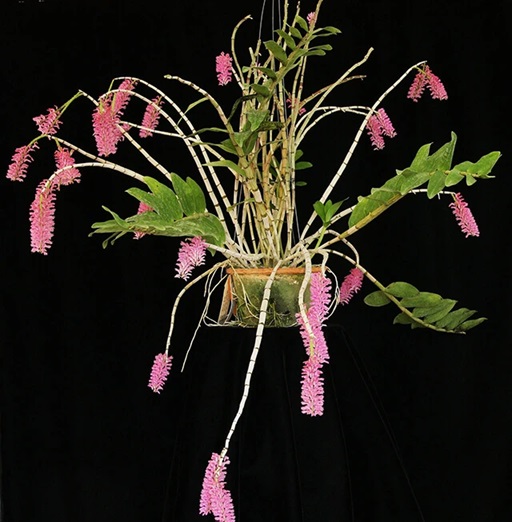
A basket of Dendrobium orchids with artistic beauty.
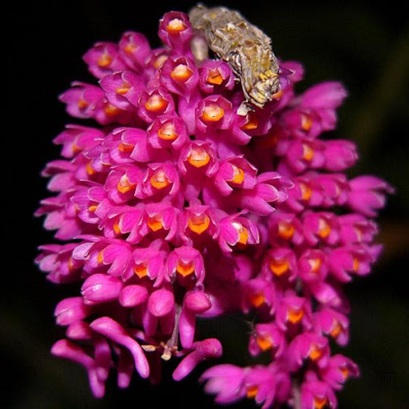
The most impressively colored clusters of Dendrobium orchids.
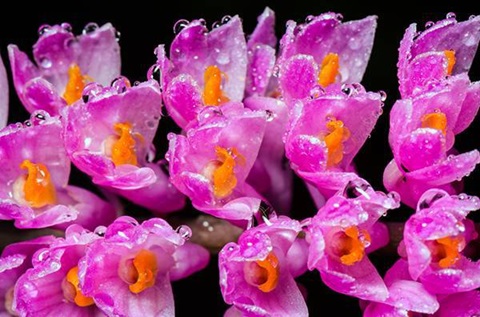
The Dendrobium orchids glisten in the morning dew.
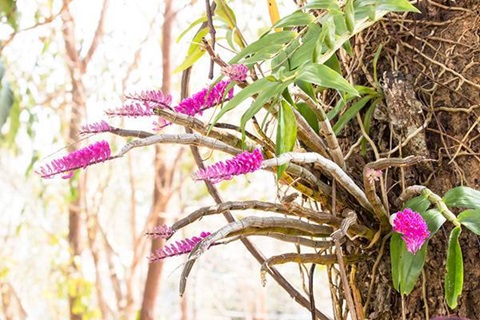
Image of orchid growing on tree trunk.
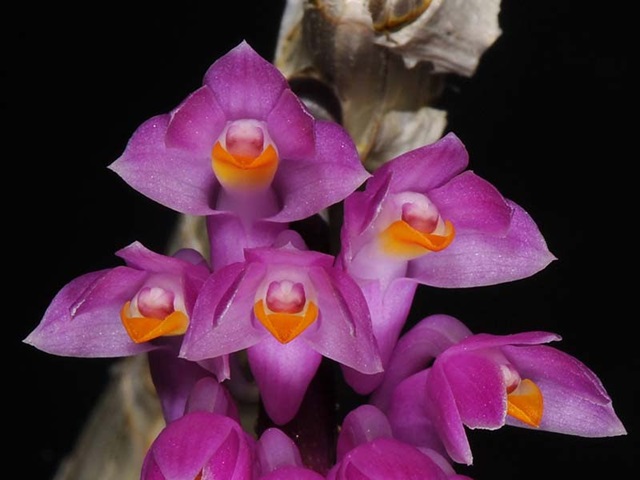
Close-up of the flower face of the orchid Bao hi.
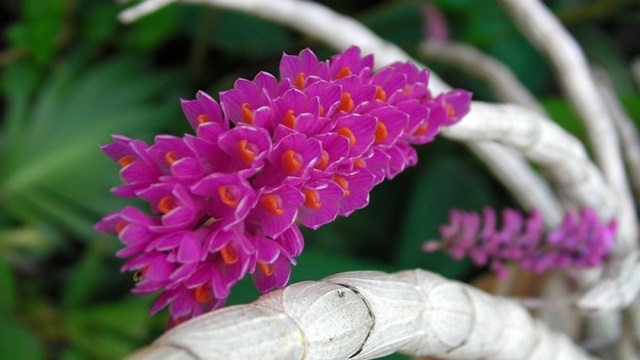
A branch of orchid is blooming.
The Dendrobium orchid is not only a beautiful wild orchid with a bright pink color, but it also brings a feeling of joy and excitement, just like its name. If you want to find an orchid that is beautiful, easy to grow and has many meanings, the Dendrobium orchid is a perfect choice.
Don't miss the next articles in the Blog section of orchid-vn.com to discover more beautiful orchid species as well as effective ways to grow and care for orchids shared by experienced people.
